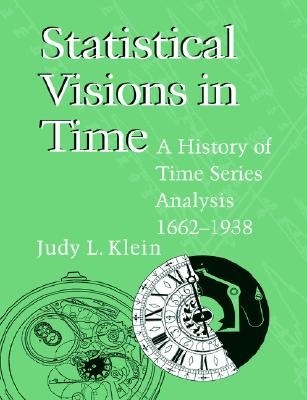| Statistical Visions in Time: A History of Time Series Analysis, 1662-1938 Revised Edition Contributor(s): Klein, Judy L. (Author) |
|
 |
ISBN: 0521023173 ISBN-13: 9780521023177 Publisher: Cambridge University Press OUR PRICE: $56.99 Product Type: Paperback - Other Formats Published: December 2005 Annotation: This work documents the history of techniques that statisticians have used to manipulate economic, meteorological, biological, and physical data taken from observations recorded over time. The manipulation tools include percent change, index numbers, moving averages, and "first differences," i.e., subtracting one observation from the previous value. Professor Klein argues that nineteenth-century business journals, such as The Economist, were as important to the development of time series analysis as Latin treatises on probability theory. While examining the roots of mathematical statistics in commercial practice, she traces changes in analytical forms from table to graph to equation. This history is accessible to students with a basic knowledge of statistics as well as financial analysts, statisticians, and historians of economic thought and science. |
| Additional Information |
| BISAC Categories: - Business & Economics | Economic History - Mathematics | Probability & Statistics - General - Business & Economics | Economics - Theory |
| Dewey: 519.550 |
| Physical Information: 0.76" H x 7.44" W x 9.69" (1.45 lbs) 368 pages |
| Descriptions, Reviews, Etc. |
| Publisher Description: This work documents the history of techniques that statisticians have used to manipulate economic, meteorological, biological, and physical data taken from observations recorded over time. The manipulation tools include percent change, index numbers, moving averages, and first differences, i.e., subtracting one observation from the previous value. Professor Klein argues that nineteenth-century business journals, such as The Economist, were as important to the development of time series analysis as Latin treatises on probability theory. While examining the roots of mathematical statistics in commercial practice, she traces changes in analytical forms from table to graph to equation. This history is accessible to students with a basic knowledge of statistics as well as financial analysts, statisticians, and historians of economic thought and science. |